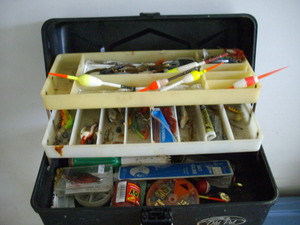The Glass Menagerie by Tennessee Williams (1944) is unique in the fact that the play all takes place in the exact same setting. Williams describes the setting in tons of detail. The first 500 words of the play are dedicated to conveying exactly what is meant by this unique setting build up. He obviously has a purpose for this elaborate build up. While there are several purposes for this attention to detail it seems most likely that Williams intends to use this information to ensure that the audience has the most direct interpretation of what he intends for them to get from the play. Many authors want audiences to have some room to make their own interpretations of the work, but since so much of the play is wrapped in interpretation, memory and suggestion it seems that Williams had to ensure that there was some steadfast reality to the play and that he intended for it to be his interpretation of the setting. There is also some indication that Williams may have intended the play to have information for the reader that can never reach the audience in the same way.
While the setting is very simple two rooms in a small tenement apartment accessed by a fire escape. That setting is meticulously described by Williams. Many parts of this description of the setting are very literal and helpful for the author to truly convey to the audience what he wants them to see and what he wants to convey in that image.
Downstage is the living-room, which also serves as a sleeping-room for Laura, the sofa is unfolding to make her bed. Upstage, centre, and divided by a wide arch or second proscenium with transparent faded portières (or second curtain), is the dining-room. In an old fashioned what-not in the living-room are seen scores of transparent glass animals. A blown-up photograph of the father hangs on the wall of the living-room, facing the audience, to the left of the archway. It is the face of a very handsome young man in a doughboy’s First World War cap. He is gallantly smiling, ineluctably smiling, as if to say ‘I will be smiling forever’. (Scene 1, line 23-27)
For example he doesn’t just state that there is the picture of the father on the wall. He describes the father in uniform he gives a long detailed description of exactly how the smile looks, and what that smile itself should say. This is purely informative and helpful in mainlining, so to speak, the author’s intentions directly to the audience. By knowing that the father was a war veteran we have some semblance of respect for him. The smile shows that he has happiness. Later it seems that he may be the only member of the family who ever found happiness. The smile also alludes that happiness is found only in escaping that apartment.
Other parts of the description have little to no value to the audience. It offers information to the reader and it gives insight to the director and the cast as to Williams’ opinion of society and the Wingfield’s place in it. This can help to color the way that the play is put on but there is no way to directly convey this added information to the audience.
The Wingfield apartment is in the rear of the building, one of those vast hive-like conglomerations of cellular living-units that flower as warty growths in overcrowded urban centres of lower-middle-class population and are symptomatic of the impulse of this largest and fundamentally enslaved section of American society to avoid fluidity and differentiation and to exist and function as one interfused mass of automatism. (Scene 1 lines 1-6)
Not only does Williams is the very beginning of the play dedicated to this type of information. Yet Williams frequently returns to this overly descriptive language when he builds up this detailed setting. Even when he is in the middle of giving useful details to the audience he cannot but help to color his description with these types of phrases “by dark, narrow alleys which run into murky canyons of tangled clothes-lines, garbage cans, and the sinister lattice-work of neighbouring fire-escapes.” (Scene 1 lines 17-19). The audience needs to know about the clothes lines, garbage cans, and the fire escapes describing them as “murky canyons” or “sinister” really doesn’t help to stage the scene. It gives the reader information that is necessary as to how he feels and interprets society. Other times he seems almost to get sidetracked by relating a simple detail to social commentary that in no way can be understood by the audience. “[B]y a fire-escape, a structure whose name is a touch of accidental poetic truth, for all of these huge buildings are always burning with the slow and implacable fires of human desperation.” (Scene 1 lines 7-9)
The affect that all of this detail and build up of the setting in a way that cannot be utilized effectively in a production tells the reader that the author cares more about what they think than any of the attention or influence that comes from production. It gives the reader an immediate connection to the author and allows them to feel important. There is much of this play that is hard to understand. It is difficult for both reader and audience to grasp the entire intended subtleties of this play. It seems almost that this play was intended to be read and watched simultaneously. The visual aspect will help to clarify what the reader may get wrapped up in. While the script gives the audience the information that gets hazy in the nuances of the relationships between the characters.
References
Williams, T (1944) The Glass Menagerie in Literature for composition: Essays, stories, poems, and plays (9th ed.). Barnet, S., Cain, W.E., & Burto, W. (2011). New York, NY: Longman.



